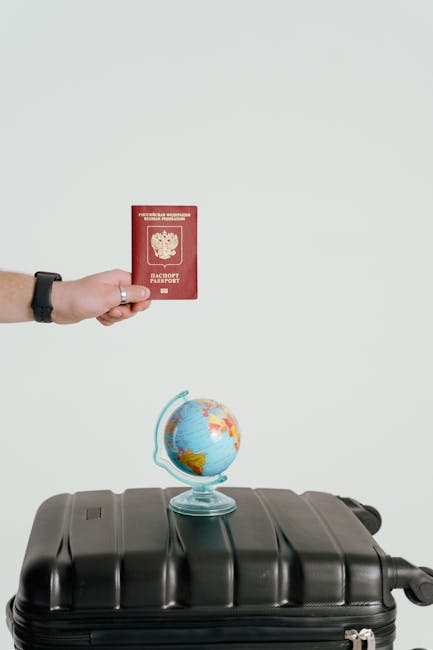Second Passports & Residency: How to Unlock Travel, Work, and Financial Freedom
In an increasingly interconnected world, physical assets are no longer the only status symbols. A second passport or residency abroad has become a modern marker of freedom: the freedom to travel without constant visa hurdles, to access better economic opportunities, and to design a life that isn’t constrained by borders. Whether you’re chasing expanded visa-free access, tax planning flexibility, or simply a more mobile lifestyle, understanding the options, trade-offs, and practical steps is essential.
What is a second passport and why does it matter?
A second passport is an additional nationality granted to you by another country, often allowing visa-free travel to a different set of destinations and the right to live and work there. A second residency gives many of the same lifestyle benefits — permission to live and often work in another country — without immediate citizenship.
Visa-free access varies dramatically by nationality. Some passports open 180+ countries visa-free, while others offer far fewer destinations. That disparity affects travel convenience, business mobility, and even career prospects. Beyond travel, residency or a second passport can change where you pay taxes, how you access healthcare and education, and the kinds of investment or lifestyle choices available to you.
Why people pursue a second passport or residency
Motivations differ by individual, but common reasons include:
- Broader visa-free travel and simpler international mobility.
- Improved opportunities to live and work in higher-paying labor markets.
- Business expansion and easier access to global markets.
- Diversification of personal and financial risk (political, economic, or personal safety).
- Access to better healthcare, education, or social benefits for family members.
For many, the idea isn’t escaping one place to abandon it rather than enhancing options. I’ve lived overseas multiple times on work visas — four years in Abu Dhabi and more recently in Brazil — and saw firsthand how residency changes daily life and career flexibility.
Types of second citizenship and residency: Which path fits you?
There are several common routes to a second passport or residency, each with different timelines, costs, and eligibility rules:
1. Citizenship by naturalization
Live in the country for a required period, meet language or integration requirements, and apply for citizenship. This is often the cheapest monetary route but requires time and residency commitments.
2. Citizenship by descent
If you have parents, grandparents, or ancestors from another country, you may qualify for citizenship documentation through lineage. This can be a relatively fast route but requires proof of family history and proper paperwork.
3. Citizenship or residency by investment (golden visas)
Many countries offer residency—or even direct citizenship—through qualifying investments such as real estate purchases, government bonds, or business investment. This route can be expensive but fast and predictable.
4. Work visas and employer sponsorship
Secure a job with an employer who sponsors your visa. Over time, some countries allow transition from work residency to permanent residency or citizenship.
5. Special categories (retirement visas, skilled migration)
Certain countries offer residence for retirees with proof of income, or skilled-worker programs that invite professionals in specific industries.
How to evaluate whether a second passport or residency is right for you
Ask these practical questions to clarify goals and make a tactical plan:
- What is your main objective: travel freedom, work options, safety, tax planning, or education/healthcare access?
- How long can you commit to living in a new country if required?
- What is your budget for relocation, legal fees, and potential investment requirements?
- How will residency or citizenship affect your tax status and legal obligations?
- Do language, cultural fit, and local lifestyle align with your long-term plans?
Creating clarity on these points will help you decide between quick but costly investment routes and longer residency paths that may be cheaper but require more personal time abroad.
What are the main benefits and trade-offs?
Major benefits
- Expanded visa-free travel and fewer entry hassles.
- Ability to live and work in a different jurisdiction.
- Access to alternative banking, business, and education systems.
- Potential risk diversification for personal freedom and assets.
Key trade-offs
- Upfront costs (application fees, legal counsel, investment thresholds).
- Ongoing obligations (residency requirements, taxes, reporting).
- Possible relinquishing of existing citizenship in some countries.
- Emotional and practical challenges of relocation and integration.
Tax, legal, and practical considerations you must not ignore
Securing residency or citizenship is only part of the puzzle. Tax residency in particular can be complex: citizenship does not always equal tax residency, and where you pay tax depends on local laws, days physically present, and source of income. Common considerations include:
- Double taxation agreements between countries — they can prevent being taxed twice on the same income.
- Exit taxes or exit obligations when renouncing citizenship or changing tax residency.
- Reporting duties — many countries require disclosure of foreign bank accounts and assets.
- Healthcare and pension entitlements that may change with residency status.
Before making major decisions, consult qualified immigration and tax professionals who understand both your home country rules and the laws of the destination country.
Step-by-step path: How to pursue a second passport or residency
- Define your primary goals (travel, work, tax, safety).
- Research countries that align with those goals and your eligibility.
- Estimate costs for application, legal help, and potential investments.
- Consult immigration and tax advisors to map legal implications and residency timelines.
- Prepare and organize required documents (birth certificates, police records, proof of funds, marriage certificates, etc.).
- Submit applications and follow official processes; track timelines and meet residency milestones.
- Plan the logistics of relocation: housing, schooling, healthcare, banking, and local integration.
What documents and proof are commonly required?
While the exact list varies, typical documentation includes:
- Valid passport(s) and national ID
- Birth and marriage certificates
- Police clearance and background checks
- Proof of financial means or investment funds
- Employment or business records (if applying via work)
- Medical certificates in some cases
How long does it take to get a second passport or residency?
Timelines vary widely. Golden visa programs can take months to a couple of years depending on investment and processing speed. Naturalization routes typically require several years of lawful residence before you’re eligible. Citizenship by descent can be relatively fast if documentation is straightforward.
Can a second passport improve career and income opportunities?
Yes. Residency in certain countries can open doors to higher-paying markets or simplify remote work arrangements. Many people relocate to access better health systems, education, or larger markets. For digital nomads and remote workers, a second residency can be a gateway to new clients and improved quality of life. If you’re exploring remote-friendly careers, check resources like Top Digital Nomad Jobs and strategies for remote success in Maximizing Success in Remote Work.
How to avoid common pitfalls
Common mistakes include underestimating ongoing obligations, failing to consult tax advisors, and neglecting cultural fit or language barriers. Prepare for:
- Unexpected reporting requirements or new tax obligations.
- Insufficient documentation leading to application delays.
- Financial and emotional costs of relocation.
Frequently asked question: How do I know which route is best for me?
There is no one-size-fits-all answer. If speed and predictability matter and you have capital, an investment route may make sense. If cost is the main issue and you can commit to living abroad, naturalization through residence or work sponsorship could be preferable. Use this short checklist to decide:
- Prioritize your goals: travel, work, tax, or family needs.
- Assess how much time you can spend abroad versus budget for investment.
- Map legal and tax consequences with professionals.
- Consider quality-of-life factors: language, healthcare, education.
Also review related guidance on achieving work-life balance and transitioning to remote-friendly lifestyles in Mastering Work-Life Balance.
Real-world considerations and a closing perspective
A second passport or residency isn’t just paperwork. It’s a lifestyle decision that can reshape your career, family prospects, and sense of security. For some, it’s about avoiding visa lines and enjoying seamless travel. For others, it’s a strategic hedge against uncertain political or economic conditions. Whatever your motivation, rigorous planning, expert advice, and honest evaluation of costs and trade-offs will serve you best.
Action checklist: Start your second passport plan
- Clarify your primary reasons and preferred regions.
- Shortlist countries and programs that match your budget and timeline.
- Book a consultation with immigration and tax advisors.
- Begin collecting required documentation.
- Create a relocation budget and timeline.
If you’re curious about job flexibility abroad or digital-nomad career options, explore our guide to remote careers and travel-friendly roles to pair with your residency plans.
Take the next step
Thinking about a second passport or residency? Start by defining your goals and consulting a specialist who can map immigration and tax implications to your personal situation. With the right plan, you can turn global mobility from a distant dream into a practical, well-managed reality.
Ready to plan your next move? Contact an immigration advisor and begin the checklist today — then explore opportunities to align your career and lifestyle with your new mobility goals.




